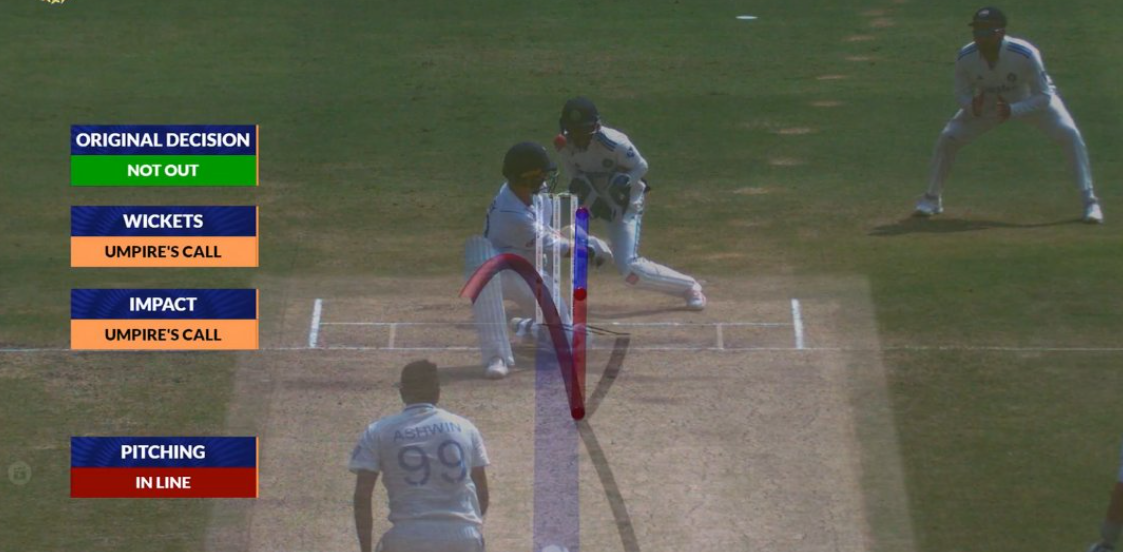Rohit debates with umpire after Tom Hartley ‘out’ decision overturned despite ‘umpire’s call’ ball-tracking

Tom Hartley’s dismissal was overturned on ‘umpire’s call’ upon reviewing – despite the original decision being out – leading to confusion, a conversation between Rohit Sharma and the umpires, and a re-review on day four of the India-England Visakhapatnam Test.
Hartley ruled not out: What was the original decision?
The incident occurred on the fifth ball of the 63rd over, when Ravichandran Ashwin seemingly had Hartley caught off a reverse sweep. The ball lobbed behind the wicketkeeper, where first slip Rohit Sharma took a splendid diving catch. The umpire Chris Gaffaney adjudged him out – giving R Ashwin his 500th Test wicket – but Hartley was quick to take the review.
The decision was sent upstairs, where replays showed that the ball had missed Hartley’s intended sweep, missed the glove, and hit his forearm before flying behind. The umpire checked the Ultra Edge before confirming there was no bat.
As per the protocol, the third umpire further checked for lbw, analysing ball tracking to see if the impact of the ball’s contact with the forearm was in front of the stumps. The ball pitched in line, but the ‘impact’ and ‘wickets hitting’ came out to be umpire’s call. The original decision read ‘not out’, and Hartley was reprieved.

The ball lobbed off Hartley’s forearm, confirming he was not caught
What do the Playing Conditions say?
Rohit was seen having a chat with the umpires thereafter, possibly questioning why ball tracking said ‘original decision not out’ when the on-field decision was out. However, as per the ICC’s rules, the original decision only refers to the mode of dismissal for which the decision was reviewed – in this case, caught.
According to Appendix D of the World Test Championship playing conditions, communication between the on-field umpire and the third umpire involves specifying the mode of dismissal.

The umpire checked ball tracking for lbw, with the ‘original decision’ now ‘not out’
3.3.3.2 The relevant on-field umpire shall initiate communication with the third umpire by confirming the mode of dismissal for which the relevant on-field umpire adjudicated the appeal
3.3.4 In reviewing a dismissal, if the third umpire believes that the batter may instead be Out by any other mode of dismissal, he/she shall advise the on-field umpire accordingly. The process of consultation described in this paragraph in respect of such other mode of dismissal shall then be conducted as if the batter has been given Not out
The second clause clarifies the decision on Hartley: the third umpire checked if he was possibly out by another mode of dismissal – lbw – but the consultation was conducted as “as if the batter has been given not out”. There was more confusion thereafter, with the umpire’s re-opening the review – but only to check whether Hartley had hit the ball with the back of his bat in his follow-through. When this was cleared, play continued.
Ashwin had to wait for his 500th scalp – Hartley was eventually dismissed by Jasprit Bumrah, the final one to fall, giving India a 106-run win.

